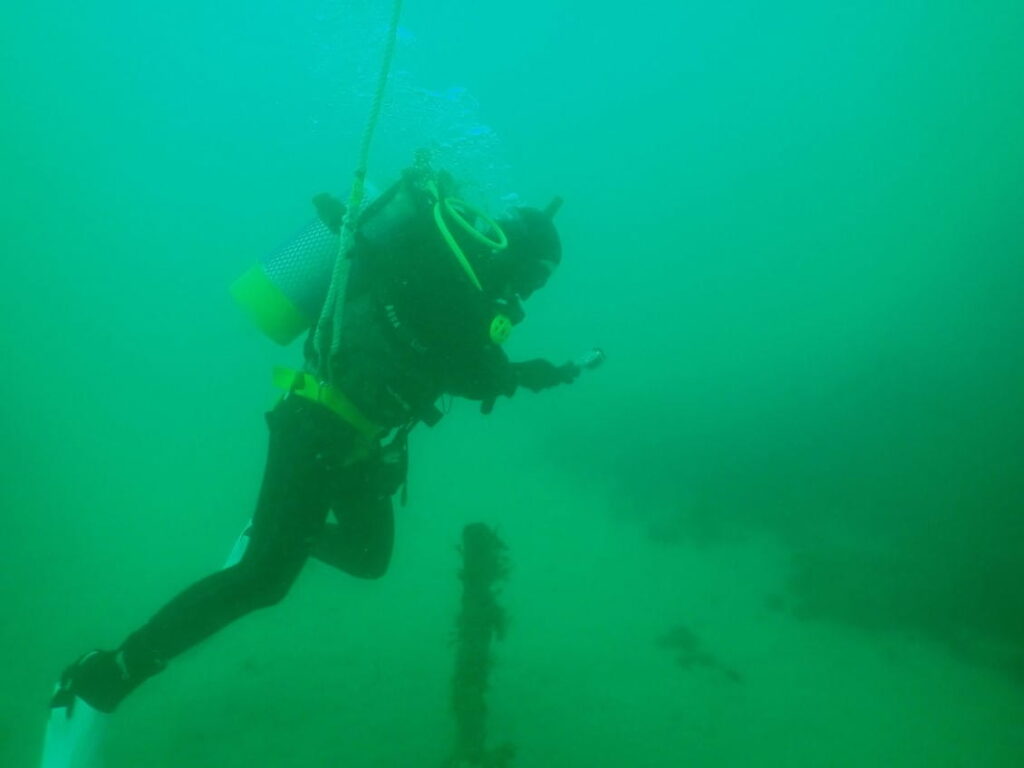The ghostly remains of a forgotten shipwreck off Wilson’s Promontory have been revealed thanks to a new marine archaeological survey. Maritime archaeologists filmed the wreck of the Cheviot in Waterloo Bay as part of a land and sea archaeological survey of the Prom by Parks Victoria and Heritage Victoria.
Data from the survey will create a virtual tour, allowing people the chance to experience the wreck, which has lain underwater since 1854. Archaeologists will also use the data and imagery for research and conservation work.
Submerged for 160 years, the wreck now teems with all kinds of marine life, including sea jellies, wrasse, sponge and kelp.
Much of the wooden structure has been eaten away, but iron parts like the capstan and stove, as well as piles of cargo including bricks are clearly visible.
This Cheviot is not to be confused with the better-known SS Cheviot which sank off Point Nepean in 1887. Launched in Britain in the 1820s, it operated between New Zealand, Hobart and along the coast of New South Wales and Victoria, changing hands several times.
On the death of owner Charles Seal, a prominent Hobart whaler, the Cheviot and the rest of his ships passed into the hands of his wife Phillis, making her the first woman shipowner in Australia. Phillis sold the Cheviot on to another whaler, William Mansfield, who was master when it sank.
The exact circumstances of the shipwreck aren’t known. The Cheviot’s masts were seen sunk in Waterloo Bay by a passing vessel in late March 1854.
As part of the wider archaeological survey, several historic sites in Wilson’s Promontory National Park were examined.
The ruins of huts at Refuge and Home Coves, and the former sawmilling settlement at Sealer’s Cove were surveyed to make sure any works nearby – including the Sealer’s Cove Boardwalk rebuild – don’t impact on them.
At Refuge Cove some whalebones were discovered still bearing cut marks made by whalers 150 years ago, as they butchered the carcass and rendered it into whale oil.
Parks Victoria Statewide Heritage Advisor Dr Janine Major said: “We’re excited for people to experience a virtual dive to the wreck of the Cheviot thanks to this survey work.”
“Surveys like this help develop our understanding of these places and ensure any works planned there don’t impact on heritage values. This is our responsibility as custodians for current and future generations,” she said.

